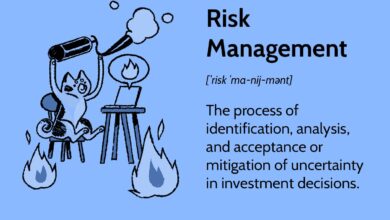Understanding Life Insurance: A Beginner’s Guide

Life insurance is a fundamental aspect of financial planning, offering peace of mind and security for your future and that of your loved ones. This beginner’s guide aims to demystify life insurance, helping you understand its importance, the different types available, and how to choose a policy that best suits your needs.
What is Life Insurance?
Life insurance is a contract between an individual and an insurance company, where the insurer promises to pay a designated beneficiary a sum of money in exchange for premiums upon the death of the insured person.
The Purpose of Life Insurance
The primary purpose of life insurance is to provide financial protection to surviving dependents after the death of an insured. It can help cover funeral costs, debts, and living expenses, ensuring that your family’s financial future is secured.
Types of Life Insurance
There are two main types of life insurance: term life insurance and whole life insurance. Each serves different needs and financial goals.
Term Life Insurance
Term life insurance provides coverage for a specific period, usually ranging from 5 to 30 years. It pays out a death benefit if the insured dies during the policy term. This type of insurance is often more affordable and is suitable for those seeking temporary coverage.
Whole Life Insurance
Whole life insurance, a type of permanent life insurance, provides lifelong coverage and includes an investment component known as the policy’s cash value. The premiums are typically higher than term life, but it can serve as both a death benefit and a savings vehicle.
Determining Your Insurance Needs
The amount of life insurance you need depends on various factors, including your financial situation, age, lifestyle, and future goals.
Assessing Financial Obligations
Consider your current and future financial obligations, such as mortgages, debts, education expenses, and income replacement. A general rule is to have a policy that covers 5-10 times your annual income.
The Process of Getting Life Insurance
Obtaining life insurance involves several steps, starting with choosing the right type and amount of coverage.
Application and Underwriting
The application process includes a health questionnaire and possibly a medical exam. The underwriting process assesses your risk level and determines your premium rates.
Understanding Premiums
Premiums are the payments you make to keep your life insurance policy active. They vary based on factors like age, health, the type and amount of coverage, and the policy term.
Factors Affecting Premiums
Younger, healthier individuals typically pay lower premiums. Lifestyle choices like smoking can also impact premium costs.
Life Insurance as Part of Personal Lines Insurance
Life insurance is a crucial component of personal lines insurance, which encompasses various types of insurance policies designed to protect individuals and their assets. As a key element of personal lines insurance, life insurance contributes significantly to a comprehensive personal risk management strategy.
Choosing the Right Policy
Selecting the right life insurance policy requires careful consideration of your long-term financial goals and current financial situation.
Consulting with Professionals
It’s advisable to consult with insurance professionals who can provide guidance tailored to your specific circumstances.
The Role of Beneficiaries
A beneficiary is a person or entity designated to receive the death benefit. Choosing the right beneficiary is as important as choosing the policy itself.
Updating Beneficiaries
Regularly review and update your beneficiary designations to reflect any changes in your life, such as marriage, divorce, or the birth of a child.
Common Misconceptions About Life Insurance
Many people have misconceptions about life insurance, such as its complexity or the notion that it’s only for the elderly.
Debunking Myths
Understanding the basics of life insurance can dispel these myths and highlight its relevance for people at various life stages.
The Importance of Reviewing Your Policy
Life insurance needs can change over time. Regularly reviewing your policy ensures that your coverage continues to align with your evolving life circumstances.
Periodic Reviews
Conducting periodic reviews of your life insurance policy, especially after significant life events, is crucial to maintaining effective coverage.
Conclusion
Life insurance is a vital tool in financial planning, providing security and peace of mind for you and your loved ones. By understanding the different types of life insurance, assessing your needs, and choosing the right policy, you can ensure that your family is protected in the event of unforeseen circumstances. Remember, life insurance is not just about the payout; it’s about planning for the future and ensuring the well-being of those you care about most.



